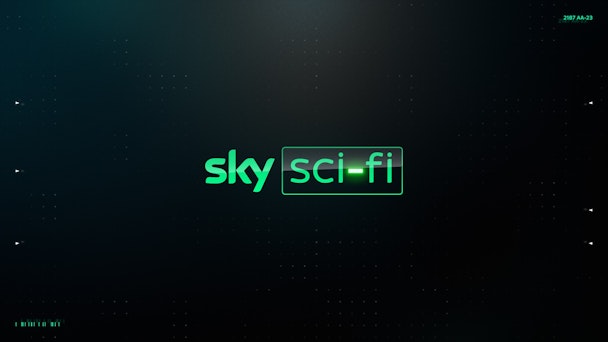Bye bye Syfy: Sky Sci-Fi rebrand aids streaming navigation and discovery
Sky has rebranded the Syfy channel to Sky Sci-Fi to clearly label its genre offerings on the Sky Glass and Sky Q homepage and help with content discovery.

Sky has ditched the Syfy channel and replaced it with Sky Sci-Fi / Sky Creative
Designed in-house by Sky Creative and spearheaded by its design director Mark Jones, the renamed channel distances itself from the 30-year-old American science fiction channel and aligns it with Sky’s portfolio of channels.
In 2020 the broadcaster launched channels Sky Documentaries and Sky Nature and rebranded the History Channel to Sky History. It is Sky’s ambition to create a “genre rail” to help viewers discover content and “give a clearer package of what [Sky has] got to offer,” Jones says.
Syfy was originally an NBCUniversal channel, but after Comcast merged with Sky the decision was taken made to rebrand it and bring it into the Sky family in the UK. The channel repositioning follows a similar rebrand with Sky History in 2020. “We love a rebrand here,” Jones jokes.
“There was a moment where it was still going to be Syfy, but we wanted it to have that clarity that it’s a sci-fi channel,” Jones explains. Syfy has an existing loyal online fanbase, which Jones was keen to differentiate from and start building Sky’s own sci-fi community base. “It helps now that they have different names as we don’t want our viewers to be confused,” he says.
Airing classic sci-fi shows including Heroes, Flash Gordon and Star Trek, Sky has expanded the content offering by adding zombie series such as Day of the Dead and horror series From.
The central piece of creative is a female AI voice that has continuity across the channel’s bumpers, idents, promos and screen architecture. Initially, the team wanted the voice to be automated and give a “retro” and “computery” feel, Jones explains. “We could have gone really niche with a robotic voice and made it feel really retro specifically for Star Trek-lovers,” he says. Jones says tonally it was important that the voice “felt modern” and communicated that the channel would offer other genres under the sci-fi umbrella such as horror and fantasy.
The final iteration of the voice takes inspiration from films including Her and Blade Runner.
Going down a retro branding route risked “polarizing viewers,” Jones says, and wouldn’t have fit with Sky’s “premium” branding. “As soon as it bumped to 1980s it didn’t represent all the shows on the channel,” he adds.
Jones describes the voice as “playful, but not slapstick. Sometimes she has emotion and sometimes she doesn’t have any and can be really deadpan.” It was crucial for Jones that the voice showed the channel didn’t take itself too seriously. “It was making sure that we were passionate and fan-led and not taking ourselves too seriously,” he says.
Jones was led by the consumer insight that the sci-fi genre “celebrates otherness. It’s where fans can belong to a community also in the know – that is the insight we wanted to build into.” Based on this insight of feeding fans’ need to be ‘in the know,’ Sky Creative brought in a Klingon expert to help them translate the AI voice to speak the famous Star Trek language.
“There is a worry as a marketer that [Klingon] will polarize audiences, but if you are in the know it’s a little gift for you,” he adds.
Social media has been crucial to the rebranding campaign as Sky hopes to further integrate itself into the sci-fi community and build fandom around Sky Sci-Fi.
It is the latest smart TV provider to prioritize content discoverability after Samsung TV told The Drum all future UI and ad products will attempt to tackle the problem.
Read more Future of TV content here.

